#deep sea arthropods
Explore tagged Tumblr posts
Photo

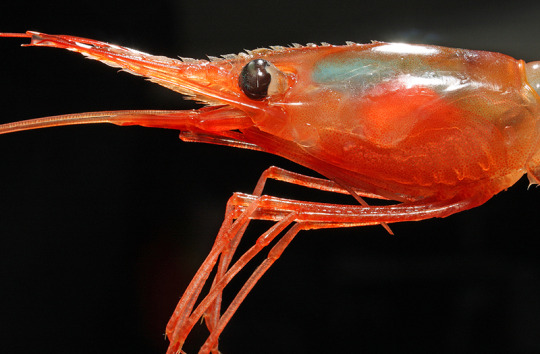
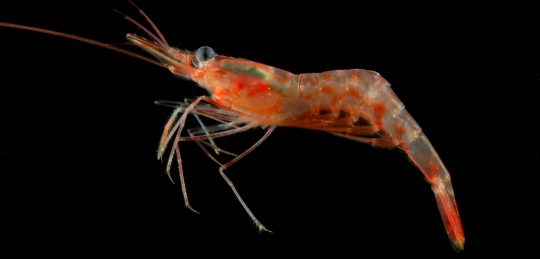
The Shrimp-ly Wonderful Northern Shrimp
A common sight in grocery stores worldwide, Pandalus borealis is known by many names, including the northern shrimp, the pink shrimp, the deep-sea prawn, and the coldwater prawn. In fact, the species is not a prawn but a shrimp; the difference is that shrimp have one pair of legs ending in claws while prawns have three pairs. P. borealis can be found along muddy ocean floors throughout the northern Atlantic and Pacific-- though some regard the two populations as being separate species. Within this range, they typically inhabit cold waters, from -1 °C to 6 °C (30 °F to 43 °F).
As the name implies, pink shrimp are bright pink or red in color, though parts of their bodies are somewhat translucent. Males are smaller than females, at only 12 cm (4.7 in) to their 16 cm (6 in) in length. As a decapod, they have ten legs; the first three pairs, called the maxillipeds are used as mouth parts, while the rest are adapted for swimming. The abdomen is divided into six segments, while the head and the thorax are fused together and protected by a thick shell known as the carapace. P. borealis’ eyes are compound eyes, like those of an insect, and are excellent at detecting movement in the dim light of the deep ocean. Additionally, their long antennae allow it to smell and taste chemicals in the water, assessing the location and suitability of prey.
The coldwater prawn lives in large schools of up to several hundred, though they have no set social structure and do not defend territories. They spend most of their time on the ocean floor, feeding on plankton and carrion. In the coldest parts of the Arctic, this makes them important members of the food web as they can recycle nutrients back into the system. In addition to widespread human predation, a number of octopi, seals, and fish are known to feed on the pink shrimp where available.
P. borealis breeds once a year, from July to September. Males release pheromones as they approach females to signal they are ready to breed, and afterwards the female will carry the stored sperm for up to eight months before fertilizing her eggs. In spring, while the water is still cold, egg-carrying females will migrate close to shore and lay their eggs-- up to 5,000 in a single clutch. The hatched larvae are all male, though they will go through six molts over the course of a year before migrating back to deeper waters and becoming sexually active. They will remain reproductive males for only about a year before molting again and transitioning to female; this is a type of hermaphroditism known as protandry. Individuals will spend the rest of their lives-- typically about eight years-- as a female.
Conservation status: Though they have not been evaluated by the IUCN, the pink shrimp is considered severely overfished in many parts of its native range. Trawling in particular poses a serious threat, as parts of a school not caught will still become stressed and die before reaching maturity. Ocean warming has also damaged populations, since this species thrives only in cold water.
If you like what I do, consider leaving a tip or buying me a ko-fi!
Photos
David Shale
Greenland Institute of Natural Resources
Erling Svenson
#northern shrimp#pink shrimp#Decapoda#Pandalidae#pandalid shrimp#true shrimp#shrimp#decapods#crustaceans#Arthropods#marine fauna#marine arthropods#benthic fauna#benthic arthropods#deep sea#deep sea arthropods#atlantic ocean#Pacific Ocean#animal facts#biology#zoology#queer animals#queer fauna
187 notes
·
View notes
Text

he’s here!! amazing creature (and car) in my shop now :)
3K notes
·
View notes
Text

#shitpost#random#idk lol#lol#funny#humor#funny memes#meme#inspiration#isopods#isoposting#marine biology#marine life#deep sea#sea floor#arthropods#giant isopod
82 notes
·
View notes
Text
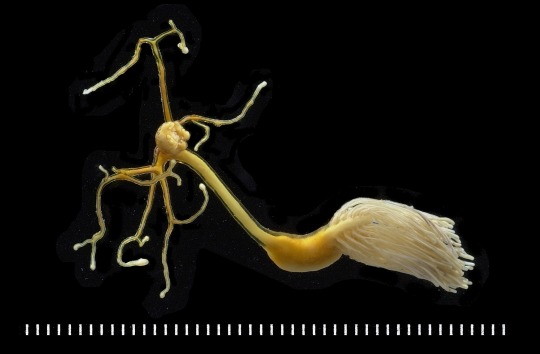
Copepod
“Lernaeolophus sultanus (Copepoda, Pennellidae), a parasite of the deep-sea fish Pristipomoides filamentosus (Lutjanidae), off New Caledonia. Scale, each scale division – 1 mm.” - via Wikimedia Commons
#poll for formatting preference is above ⬆️#wikipedia#wikipedia pictures#nature#animals#parasite#parasites#parasitology#marine biology#Pristipomoides filamentosus#Lernaeolophus sultanus#marine life#marine animals#sea life#sea animals#fish#icthyology#oceancore#deep sea#lutjanidae#copepoda#arthropoda#crustacean#arthropod
43 notes
·
View notes
Text
october invertebrates!!






























not sure what the point of this post is
I just wanted to compile all the invertebrates I posted this month into one post
I want to add more detail (name, photo credit etc) but im so tired so I'll add it tomorrow. I'll make a post when I add said more detail
(I missed one day due to network issues. whoops)
19 notes
·
View notes
Text
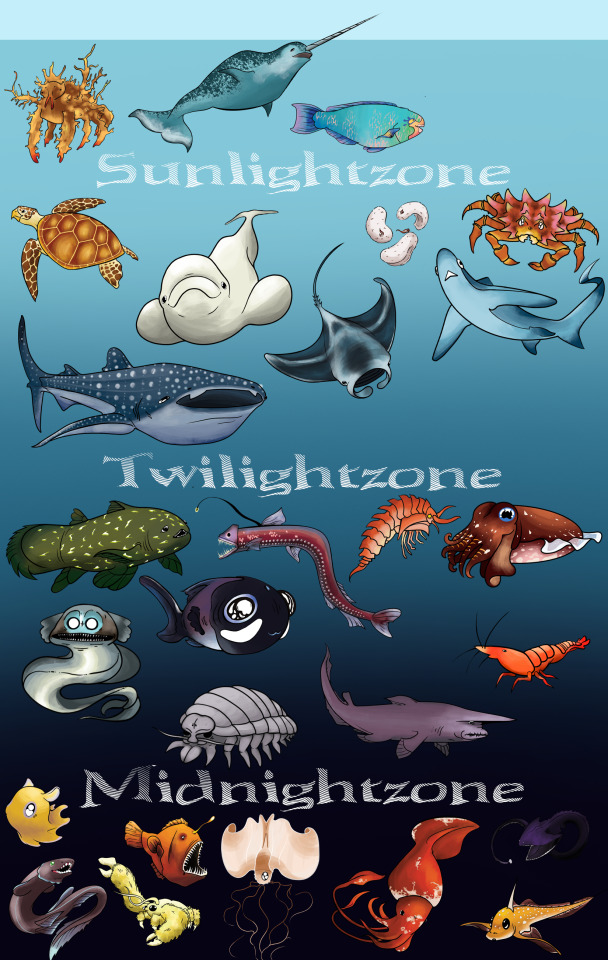
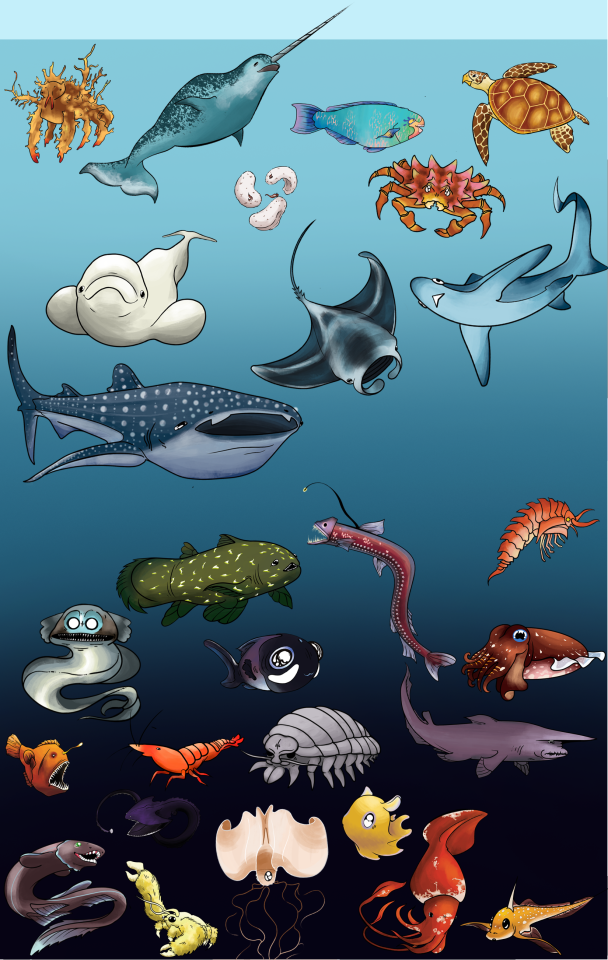
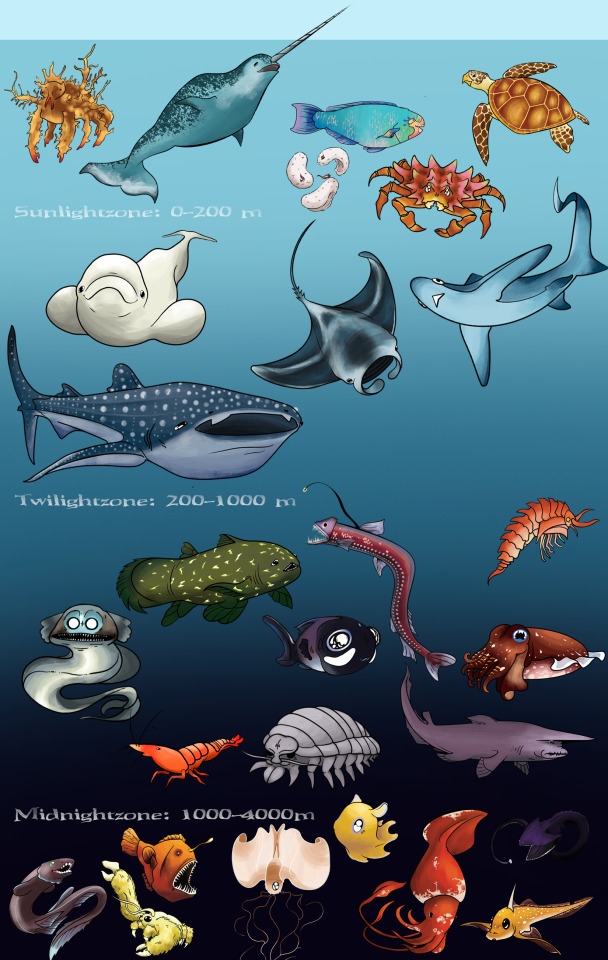
Ocean zones and their respective inhabitants.
Want posters of these? Check our shop!
#art#sea creatures#deep sea#sea art#artists on tumblr#fish#midnight zone#ocean art#shark art#crabs#yeti crabs#chimera#telescope fish#thresher shark#viper fish#cuttlefish#cephalopod#arthropod#crustacean#angler fish#gulper eel#eel#whale shark#shrimp#octopus#squid#whale#beluga#ray#sting ray
85 notes
·
View notes
Text
Had a sudden moment of CLARITY and anyway Russian Buggy
Buggy who's multilingual and whose cultural development is EXPANSIVE but who also clings to his roots a bit.
Buggy who, upon losing EVERYTHING after Roger's execution, drifted for a while, and then decided to return to his homeland - to know where he came from, to find where he will go.
He finds home and community and he learns. He learns so much and his access to the language comes as easily as breathing to him - something both surprising and not, given his proclivities with learning. He takes to it like a fish to water, and he carries that home, that place, that history, on with him even still to this day.
Just. Idk, I feel like his voice and cadence would sound LOVELY in Russian and I feel like he'd actually THRIVE with that and yes I was watching a Chernobyl documentary but LEAVE ME ALOJE LET ME COOK-
#buggy the clown#headcanons#sleepy thoughts#plz god i am so tired#why yes i do work two jobs and also dabble in silly goosery#i am a busy bee#and a sleepy bee#i love bees#and insects in general love me some arthropods too#hah imagine a deep sea one piece au#oh no-
15 notes
·
View notes
Text
INVERTEBRATE TOURNAMENT:
Sea Invertebrates CHAMPIONSHIP
It’s been a long road, but finally we can make a choice about which sea invertebrate is best. Our two candidates are both formidable— the Octopus, eight-limbed mollusk and cephalopod, renowned for its intelligence and ability to squeeze through tight spaces, and the Deep Sea Isopod, giant underwater cousin to our land invertebrate champion, the pillbug. Will the octopus’s impressive intellect help it win a victory against this deep sea scavenger? Only one way to find out, so without further ado, let’s get this poll started—
Wait. Hold on, we’re getting reports of a new challenger arriving at the stadium. But that can’t be! This is the championship! What invertebrate would have the audacity to enter the tournament this far in, to challenge the two that beat all the others? And where is this new challenger, anyways? I can’t quite see where they—
NO, No, wait just a moment! The new challenger approaches! A tiny little eight-legged beast known as the Water Bear and Moss Piglet but related to neither, it took a while for this sturdy “slow stepper” to get here but he’s right in time! Everyone meet THE TARDIGRADE!!!!!!!!! What do you think, folks?
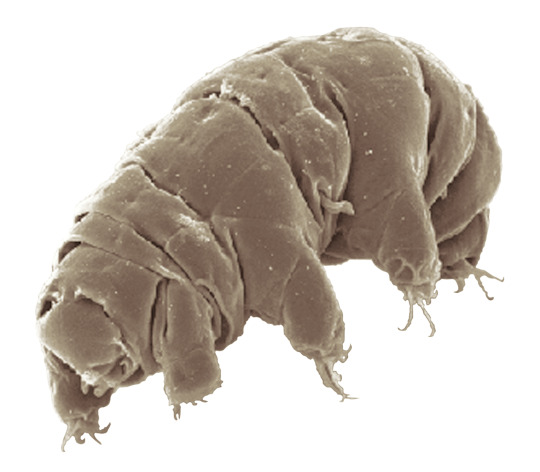



#polls#tumblr polls#poll#tumblr poll#invertebrates#nature#nature polls#animals#giant isopod#isopod#deep sea#isopods#arthropods#cephalopod#mollusk#octopus#tardigrade#water bear#moss piglet#microorganisms#sea creatures#sea life#sea animals#marine animals#marine biology#marine life#ocean
6 notes
·
View notes
Text
Hey @jazz-dude can I repost this comic on mastodon? Or do you maybe have an account over there already where you put it up? I need the fans of my isopod deep sea god story to see this. The story:
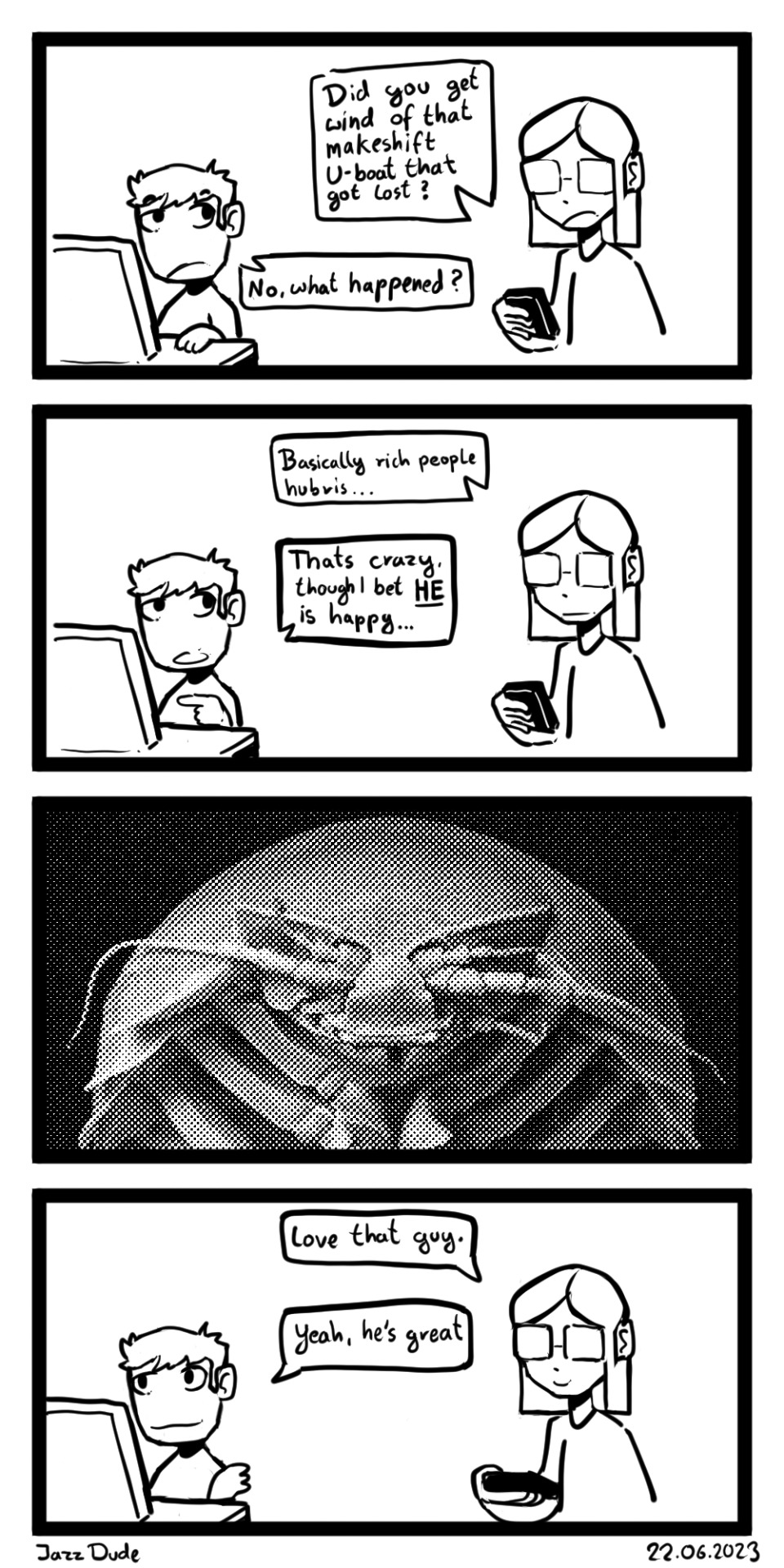
We love him
#isopod story#isopod art#isopod cartoon#isopods#deep sea creatures#giant isopod#isopod#comic#deep sea isopod#arthropods#invertebrates#bugblr
376 notes
·
View notes
Text
Also going to finally make a pinned post for all my stuff:

BOGLEECH - my tumblr blog is named after this website I created around 2002 and still update. Thousands of pages worth of content focusing on creature design as well as real biology. My review of the original Legend of Zelda monsters might be the most straightforward example of my articles. Links to some of the most popular content:

POKEMON REVIEW ARCHIVE: - I rate and review each and every single Pokemon, in Pokedex order, on its merits as a creature design. I also do so as someone whose favorite animals are all parasites.
DIGIMON REVIEW ARCHIVE - same, but more chaotic.
CREEPYPASTA COOKOFF ARCHIVE - for several years I hosted a yearly writing contest before it grew too big for me to keep up with. There are over a thousand user submitted horror, fantasy, sci fi and surrealist stories here emphasizing unconventional, original ideas you seldom see from the "creepypasta" community!

The original "MORTASHEEN" Monster Archive - since the early 2000's I've created and illustrated more than 800 creatures and counting for my own monster-catching world, now set for release as a tabletop RPG setting.
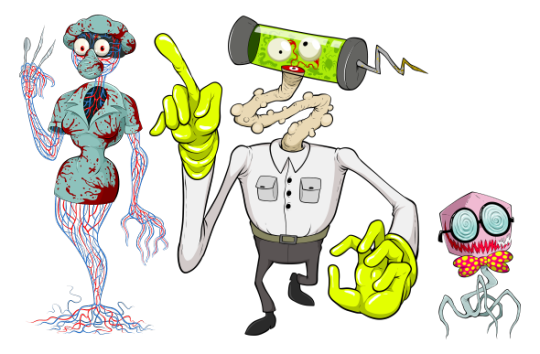
AWFUL HOSPITAL: SERIOUSLY THE WORST EVER (page one): an interactive comedy-horror-sci-fi webcomic I started in 2014 about a medical facility that could maybe be better.
Some of my other internet stuff:
PATREON - constant work makes my patreon updates inconsistent, but the content backlog goes back years with a huge amount of exclusive art and writing. I try to put up new exclusive stuff whenever I can.
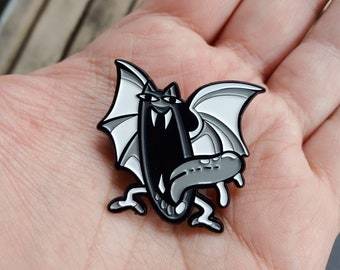
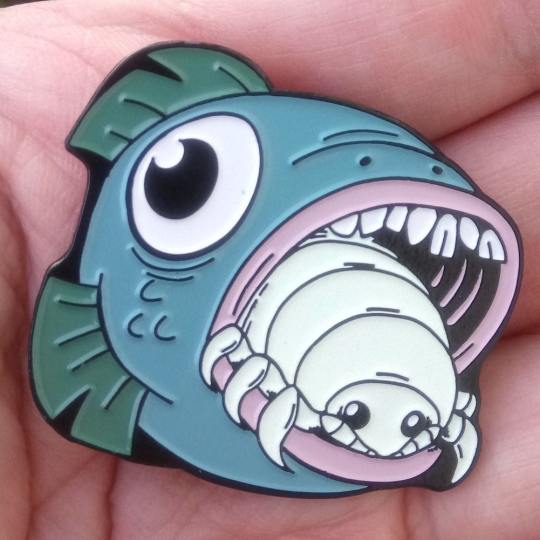
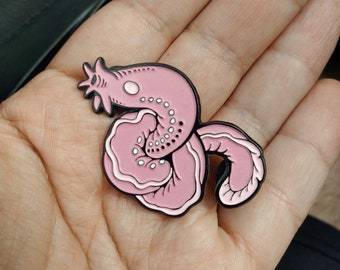

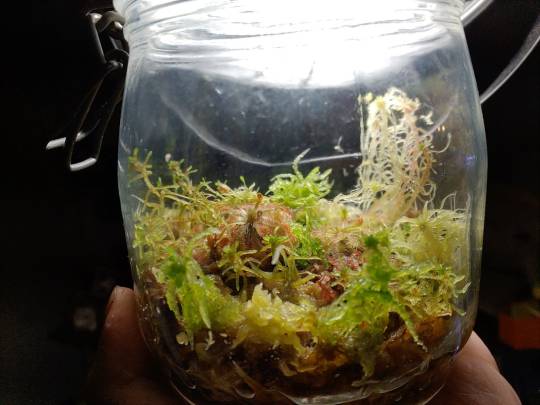
ETSY - I design all sorts of original enamel pins like these, plus I sell zero-maintenance terrarium plants (just leave them in a jar!), original books and other things!
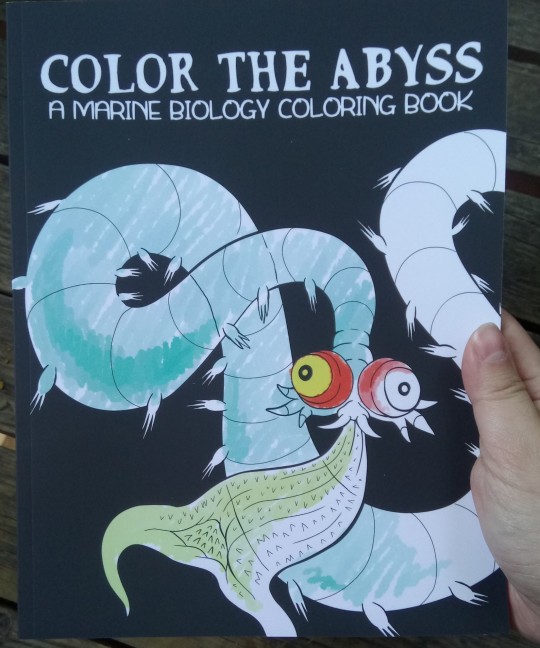
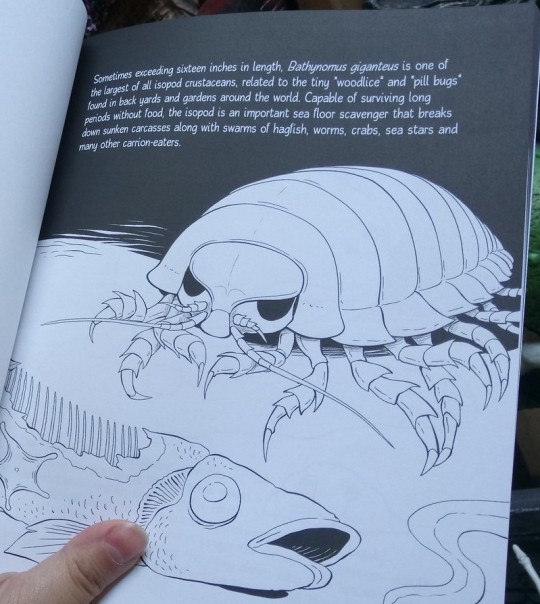
COLOR THE ABYSS (available on the above etsy!) - a 30 page educational deep sea coloring book! Includes a few famous favorites like giant isopods and hagfish, but mostly focuses on less popular, often much weirder animals.
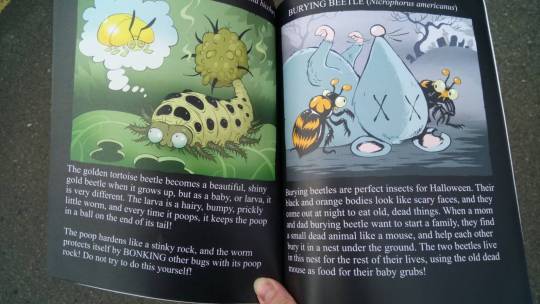
UNBELIEVABLE BUGS - also regularly restocked in the etsy store, 30 of the strangest and most surprising arthropods most people have likely never heard of, illustrated by myself and @revretch, written for even the youngest kids to understand (but will likely teach you something new at any age)
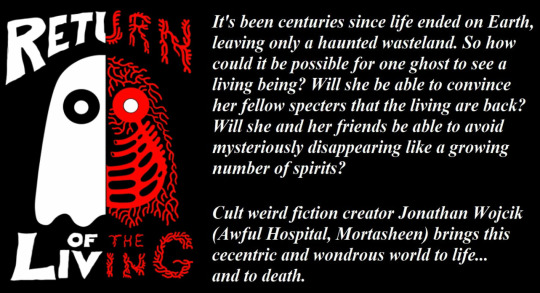
My Itch.io and Ko-fi - both sell digital versions of my books, including some creepypasta collections and my first novel, "Return of the Living," about a world of entirely ghosts suddenly dealing with the appearance of ghost-hunting monsters.
TWITCH CHANNEL - I now try to stream something at least monthly, sometimes weekly when possible, from horror games to books and art.
YOUTUBE CHANNEL - archives my twitch streams and other little things.
INSTAGRAM - look at pictures of my huge weird collection of toys and Halloween collectibles
BLUESKY - I'm going to put mainly just updates to my stuff on here. SEE ALSO:
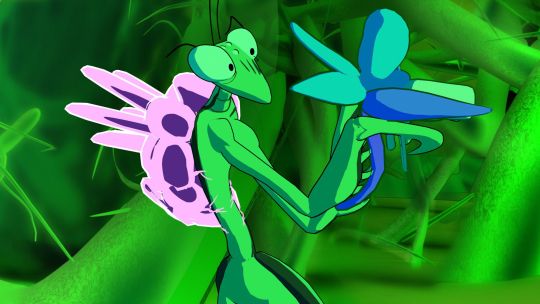
HUMANS-B-GONE - a science fiction animated series by my partner @revretch, about a world of kaiju-size, technologically advanced insects and arachnids to whom vertebrates like us are just pesky little "gubs." Also has a tumblr account @humansbgone FINALLY, HERE'S MY GUIDE AND RESOURCE TO MAKING YOUR OWN INTERNET WEBSITE IN A FEW MINUTES WITH NO KNOWLEDGE OF CODING
701 notes
·
View notes
Text
Fish of the Day
Today's fish of the day is the Giant isopod!

The giant isopod, describes around 20 species in the Bathynomus genus, but most information is based on the Bathynomus giganteus, which is known for being the first giant isopod discovered, and the largest. Giant isopods, as an arthropod, have seven pairs of legs, four jaws, and compound eyes that have over 4,000 facets. The first set of legs is modified into an appendage for grabbing food and bringing it into the mouth, along with attacking prey, and all species with the Bathynomus genus are similar, showing a lack of evolution between populations The full range of this family is unknown, but they can be found around the Indo-Pacific and the Eastern Atlantic ocean. The first time a giant isopod was found and recorded was in 1879 in the Gulf of Mexico, where the largest populations of giant isopods live, with a depth range of 310-2140 meters of depth. Outside of the Gulf of Mexico the other populations have a near identical depth range, and due to their similarity to their close land dwelling cousins, rolly pollies or woodlouse as you might know them, they are one of the textbook examples of deep sea gigantism.
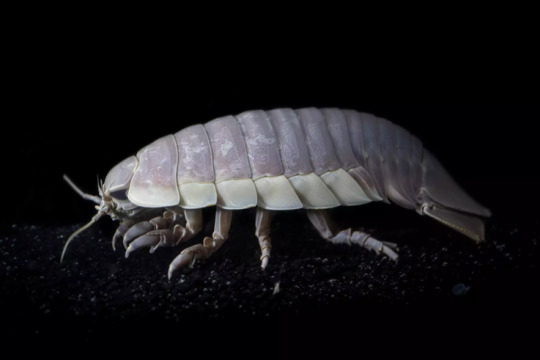
Deep sea gigantism is an observed phenomena where deep sea animals have a habit of getting far larger than their more shallow relatives. Examples of this would be the giant squid, giant sea spider, deepwater stingrays, the bigfin squid,oarfish, and many more. There is currently no encompassing explanation for why this phenomena is so prevalent, but there are multiple theories that have been proven partially correct by different genus. Food scarcity is often referenced, and often thought to be the reason for the giant isopods' large size. as without much food in the deep ocean organisms with the ability to store more food can live for longer periods without prey. Another explanation is the increase in dissolved oxygen, which is often a limiting factor in how large animals can become in their environments. A study of amphipod crustaceans in 1999 discovered their increase in size as the populations found in deeper waters directly increased with the amount of dissolved oxygen. The last and often most damning explanation for deep sea gigantism is the lowered temperature in deeper waters. This one can increase the size in animals by increasing cell size and lifespan, something that can also be found at the world's poles. Deep sea gigantism allows for the giant isopod to get anywhere between 19-36cm (7.5-14.3 inches) in length, with the largest recorded being 20 inches, about the size of a small dog. As compared to their close land relatives, which come in at less than an inch of length.
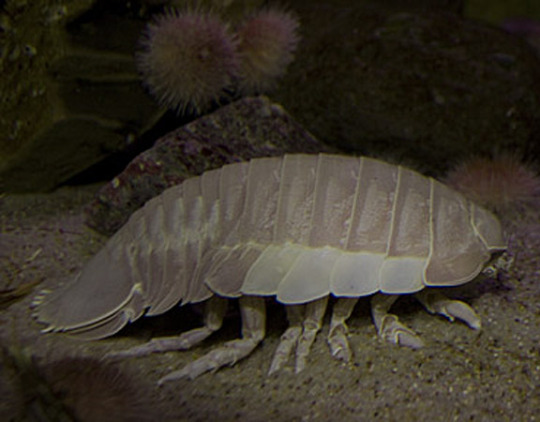
The diet of the deep sea isopod is remarkably similar to that of the land dwelling isopods, as the land dwelling isopods live off of dead or decomposing animals or plant materials. Which is similar to the diet of the giant isopod, which is an essential scavenger and carnivore in the deep. Once believed to be only scavengers, it is now known that giant isopods also actively pursue prey, usually fish, squid, shrimp, crabs, and other deep sea animals they can catch, as shown by a video of an isopod grabbing a dogfish shark and eating its face. These isopods can take down prey several times larger than them, but this may be only when in a confined space, as they don't swim fast and can only attack prey they can catch. But, as scavengers in the deep the giant isopod is primarily known for eating from whalefalls. A whalefall being when the carcass of a dead whale drifts to the deep seafloor, creating huge ecosystem hotspots and specialized animals in deep waters that feed almost exclusively on them. After eating from these whalefalls, giant isopods have been shown to go as long as 5 years in captivity without eating again, and for this reason when in the presence of food they eat far more than their body weight or size, willing to sacrifice locomotion in favor of excess, an easy trade considering they have no natural predators. Despite having no predators, they still have several behaviors similar to land pill bugs, as they can still roll into a ball shape, using their chitin armor to protect themselves, and burrow into the sediment to semi-hibernate.
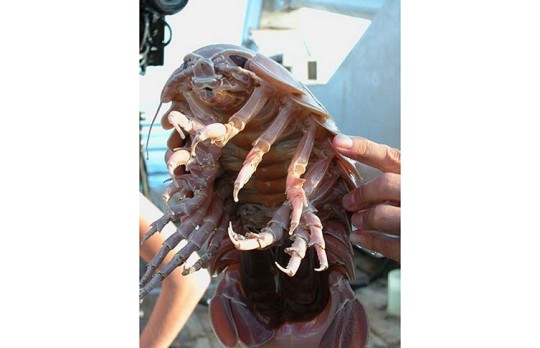
The reproduction of the giant deep sea isopod is like that of many other arthropods, relying on eggs. In the spring and winter months the isopod females will begin brooding eggs, this is done in a pouch above the stomach and it will store anywhere between 20-30 eggs. During the brooding the female will burrow down into the sediment and refuses to leave until all eggs are hatched, at which point the juveniles are left. Captive isopods eggs measure 13mm in diameter and are thought to possibly be the largest marine invertebrate egg. Once born, these juvenile giant isopods will be as large as 4 inches in length ,and set off on their own in a stage called manca. At this stage, these are almost fully developed giant isopods, lacking only the last pair of legs. These will grow over time, and these animals gain size through molts. Their full lifespan is unknown, but estimated to be decades long, with the age of sexual maturity being unknown but estimated anywhere from 15-18 months.
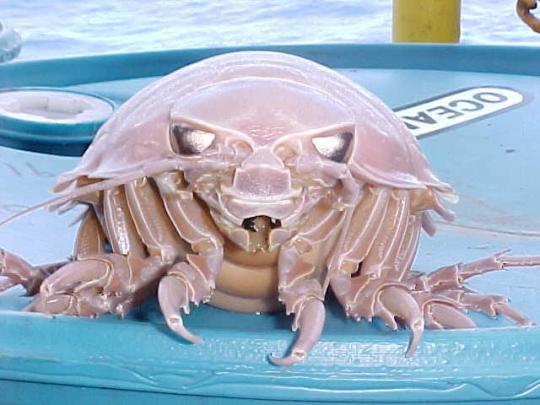
Have a good day, everybody!

#artropod#giant isopod#deep sea#deep sea giant isopod#isopod#giant#isopods#rolly polly#pill bug#sea creatures#marine life#sea life#fish#fish of the day#fishblr#fishposting#aquatic biology#marine biology#freshwater#freshwater fish#animal facts#animal#animals#fishes#informative#education#aquatic#aquatic life#nature#river
338 notes
·
View notes
Text
Round 2 - Arthropoda - Pycnogonida
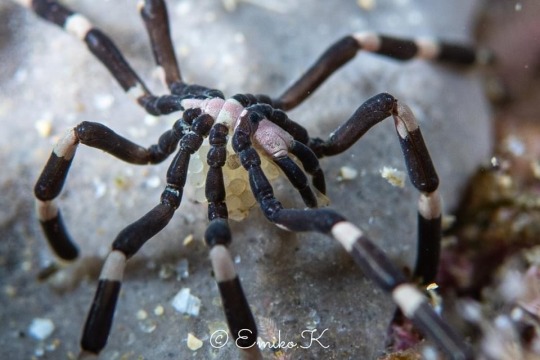
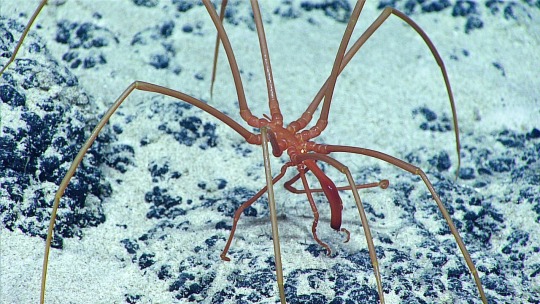
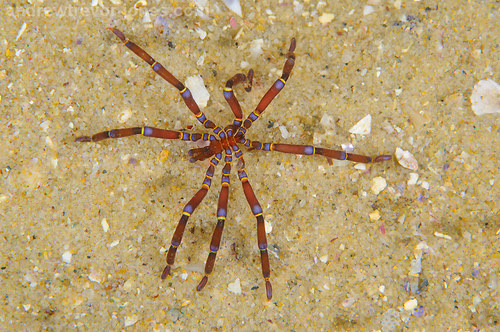
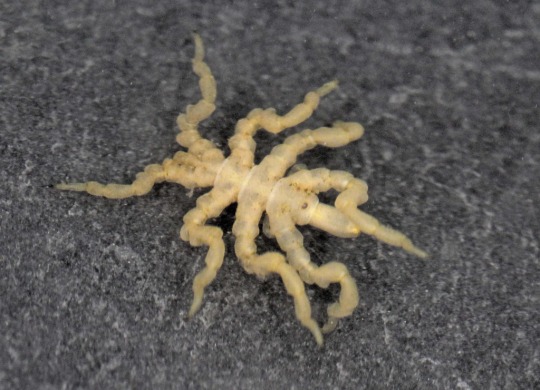
(Sources - 1, 2, 3, 4)
Pycnogonida is a class containing one order: Pantopoda, which means “all feet.” A fitting name for creatures that seem to be made entirely of legs. Commonly called “Sea Spiders”, they are not spiders, nor are they arachnids, but are actually a sister group to all other living arthropods.
Pycnogonids live in most oceans. Most are tiny, living in relatively shallow water, though some can grow to be quite large in antarctic and deep waters. Some pycnogonids are so small that each of their muscles consists of a single cell. They have a proboscis which they use to suck nutrients from soft bodied invertebrates such as cnidarians, sponges, polychaetes, and bryozoans. They can also insert their proboscis into anemones, though this rarely kills the anemone. The pycnogonid digestive tract extends into their legs. They are segmented, with the first body segment (the cephalon) consisting of the proboscis, the ocular tubercle with up to 4 simple eyes, a pair of chelifores, a pair of palps, a pair of ovigers, and the first pair of walking legs. Ovigers are used for cleaning themselves, courtship, and caring for eggs and young. Nymphonidae is the only family where both the chelifores and palps (sensory organs) remain functional. In others, these limbs are reduced or absent, instead relying on a well-developed and flexible proboscis equipped with sensory bristles. Pycnogonids are usually comprised of eight walking legs, but the family Pycnogonidae includes species with ten, and the families Colossendeidae and Nymphonidae include species with up to twelve legs! While most species have up to 4 eyes, some deep-sea species lack them entirely. Pycnogonids do not have a traditional respiratory system, instead absorbing oxygen through their legs and diffusing it throughout their body via hemolymph. Their small, long, thin hearts beat vigorously at 90 to 180 beats per minute, creating substantial blood pressure. Their nervous system consists of a brain which is connected to two ventral nerve cords, which in turn connect to specific nerves. Like other arthropods, they molt their exoskeleton as they grow.
Pycnogonid reproduction involves external fertilization after a brief courtship involving the male stroking the larger female with his ovigers and receiving the eggs if she is responsive. The couple must adjust their position until the genital pores on their legs are perfectly aligned. Only males will care for eggs and young, and in some species only the males will have ovigers while the females do not, as these limbs are used mainly for carrying and cleaning the eggs. Larvae consist only of a head with chelifores, palps and ovigers. Extra segments and legs emerge as it grows into an adult. There are at least four different types of larvae. The typical protonymphon larva is most common, is free living and gradually turns into an adult. The encysted larva spends its larval days as a parasite, finding a host in a colony of polyps, burrowing into one, turning into a cyst, and not leaving the host until it has become a juvenile. The atypical protonymphon larva lives on or within a temporary host such as a clam or polychaete worm, does not encyst or otherwise harm their host, and leaves them as an adult. Lastly, the attaching larva hatches as an embryo and immediately clings to the legs of its father, only leaving once it has two or three pairs of its own walking legs.
The pycnogonid’s cerebral appendages are unique, not found anywhere else among arthropods, except in fossils like Anomalocaris. This could mean that pycnogonids are the last surviving (highly modified) members of an ancient stem group of arthropods that lived in Cambrian oceans.

Propaganda under the cut:
They are good dads. All of them. Perfect fathers made of legs.
Their leg arrangement allows them to move forward, backward, and sideways without turning their body.
The genus Colossendeis (image 2) includes the largest pycnogonids, which live in the ocean depths. Some of them are even bioluminescent! The largest is Colossendeis colossea which can reach a leg span of 70 cm (28 in). However, their body length, including proboscis and abdomen, only reaches 7 cm (2.8 in).
About 20% of the known species of pycnogonids live in Antarctica. The cold never bothered them anyway.
One known species, Ascorhynchus corderoi, is hermaphroditic, having both ovaries and testes.
167 notes
·
View notes
Text
I do see your uncharismatic facts often and think "these are very charismatic animals" sometimes they are, in fact, uncharismatic
However this ISOPOD i had to find the link for would like a word with you
(hopefully this doesn't come off as rude i just think deep sea isopods are really neat)
Uncharismatic Fact of the Day
Isopods like woodlice are a common sight under rotting vegetation, but these small arthropods have some pretty big cousins. Giant isopods live on the ocean floor, and can reach up to 40 cm (16 in) in length! Like their terrestrial cousins, giant isopods feed primarily on debris and small bits of organic matter, but will also scavenge carcasses where available.

(Image: A giant isopod (Bathynomus giganteus) by the Monterey Bay Aquarium)
If you like what I do, consider leaving a tip or buying me a ko-fi!
#bathynomus giganteus my beloved#bathynomus giganteus#giant isopods#arthropods#crustaceans#isopod posting#deep sea isopod
200 notes
·
View notes
Text

[ID: an illustration of a pinkish isopod - a segmented, many-legged arthropod - in profile, facing to the left. It is on a teal background with a pattern of bones and shells. End.]
Giant isopod! A giant deep-sea crustacean related to those little rolly-polly pillbugs (or woodlice) you send skittering off when you lift up a rock in the woods. These guys are important marine detritivores. They’re examples of the phenomenon known as deep-sea gigantism, at between 3”-20” long depending on the species.
136 notes
·
View notes
Text
Word List: Animals

for your next poem/story (pt. 2)
Accentor - a small Eurasian songbird with generally drab-colored plumage
Brach - a female hound
Culver - a dove or pigeon
Diprotodon - a monotypic genus of Australian Pleistocene herbivorous marsupials related to the kangaroos, resembling a rhinoceros in size, and walking on four legs
Eyas - an unfledged bird, specifically: a nestling hawk
Falanouc - (or Falanaka) a viverrine mammal, Eupleres goudotii, of Madagascar closely related to the Asiatic palm civet
Gerenuk - a large-eyed antelope (Litocranius walleri) of eastern Africa with a long neck and limbs
Huemul - (or Guemal) either of two small South American deer, Hippocamelus bisulcus and H. antisiensis, having simple forked antlers
'I'iwi - Hawaiian honeycreeper (Vestiaria coccinea) with chiefly bright vermilion plumage formerly used in making feather cloaks
Jerboa - any of several social nocturnal jumping rodents (family Dipodidae) of arid parts of Asia and northern Africa having a long tail and long hind legs
Kinkajou - a nocturnal arboreal omnivorous mammal (Potos flavus) found from Mexico to South America that is related to the raccoon and has a long prehensile tail, large eyes, and yellowish brown fur
Leveret - a hare in its first year
Murre - any of a genus (Uria) of black-and-white alcids, especially: a common seabird (U. aalge) of northern seas
Nyala - an antelope (Tragelaphus angasii) of southeastern Africa with vertical white stripes on the sides of the body, a dorsal crest of hair from the neck to the base of the tail, and in the male shaggy black hair along the underside; also: a related antelope (T. buxtoni) of Ethiopia
Olm - an elongated European cave-dwelling aquatic salamander (Proteus anguinus) with permanent external gills and small eyes covered by the skin
Pudu - a small reddish deer (Pudu pudu) of the Chilean Andes having simple antlers resembling spikes and standing only 12 or 13 inches high
Quarrion - cockatiel (i.e., a crested small gray Australian parrot, Nymphicus hollandicus, with a yellow head)
Rorqual - any of a family (Balaenopteridae) of large baleen whales that have relatively small heads, short, broad plates of baleen, and the skin of the throat marked with deep longitudinal furrows and that include the blue whale, humpback whale, minke whale, fin whale, and sei whale
Spatangid - a sea urchin of the suborder Spatangina; heart urchin
Turaco - any of a family (Musophagidae) of typically crested African birds that are related to the cuckoos and have a long tail, a short stout often colored bill, and red wing feathers
Urubu - black vulture (i.e., an American vulture, Coragyps atratus, that is smaller than the turkey buzzard and heavier in flight)
Vicuña - a long-necked mammal (Lama vicugna synonym Vicugna vicugna) of the Andes from Peru to Argentina that is related to but somewhat smaller than the guanaco, has a light brown woolly coat that is paler below, is considered to the be ancestor of the alpaca, and has been historically hunted for its wool and meat
Widgeon - any of several freshwater ducks (genus Mareca)
Xiphosura - an order of arthropods comprising the horseshoe crabs and extinct related forms and usually including only the two recent genera Limulus (synonym Xiphosurus) with representatives along the American coast of the Atlantic and Tachypleus with species along the Asiatic coast of the Pacific
Zokor - a burrowing rodent (Myotalpa aspalax) native to the Altai mountains that resembles a mole rat
More: Word Lists ⚜ Part 1
#animals#word list#writing inspiration#writeblr#langblr#dark academia#writing reference#spilled ink#creative writing#linguistics#words#light academia#literature#writers on tumblr#poets on tumblr#writing prompt#poetry#rosa bonheur#writing resources#definitions from merriam-webster and oxford
69 notes
·
View notes
Text
tonight's invertebrate........neogymnocrinus richeri
he really likes holding things and I mean, can you blame him? he looks like he was born to grab onto any nearby object
unlike ceratoserolis meridionalis, he was NOT featured in "50 minutes of pure mucus terror!!!" because of how many times he grabbed the filming equipment
if you plan on fliming a halloween movie at home please call him. he'd be more than happy to feature as a skeleton hand prop
....spookiness rating: 44.2% like a disembodied hand. with too many fingers. that also happens to be a crinoid

photo from wikimedia commons, but I don't know who took them or where they originally come from
4 notes
·
View notes